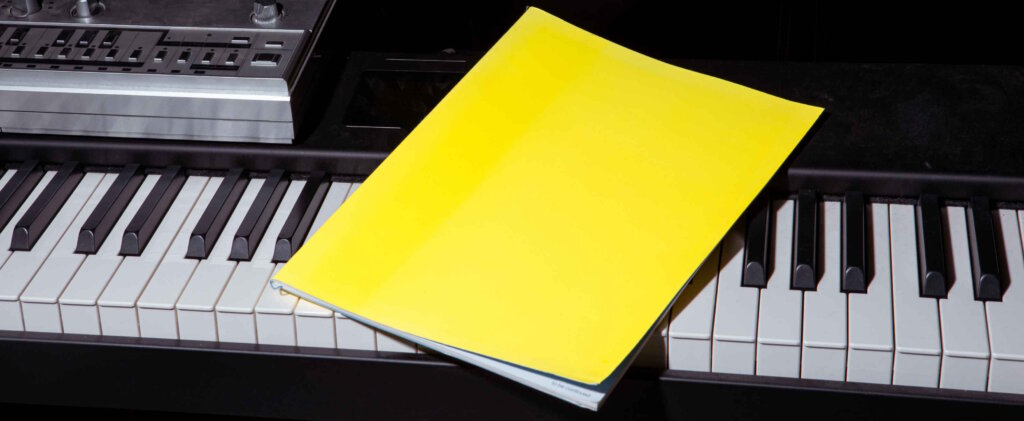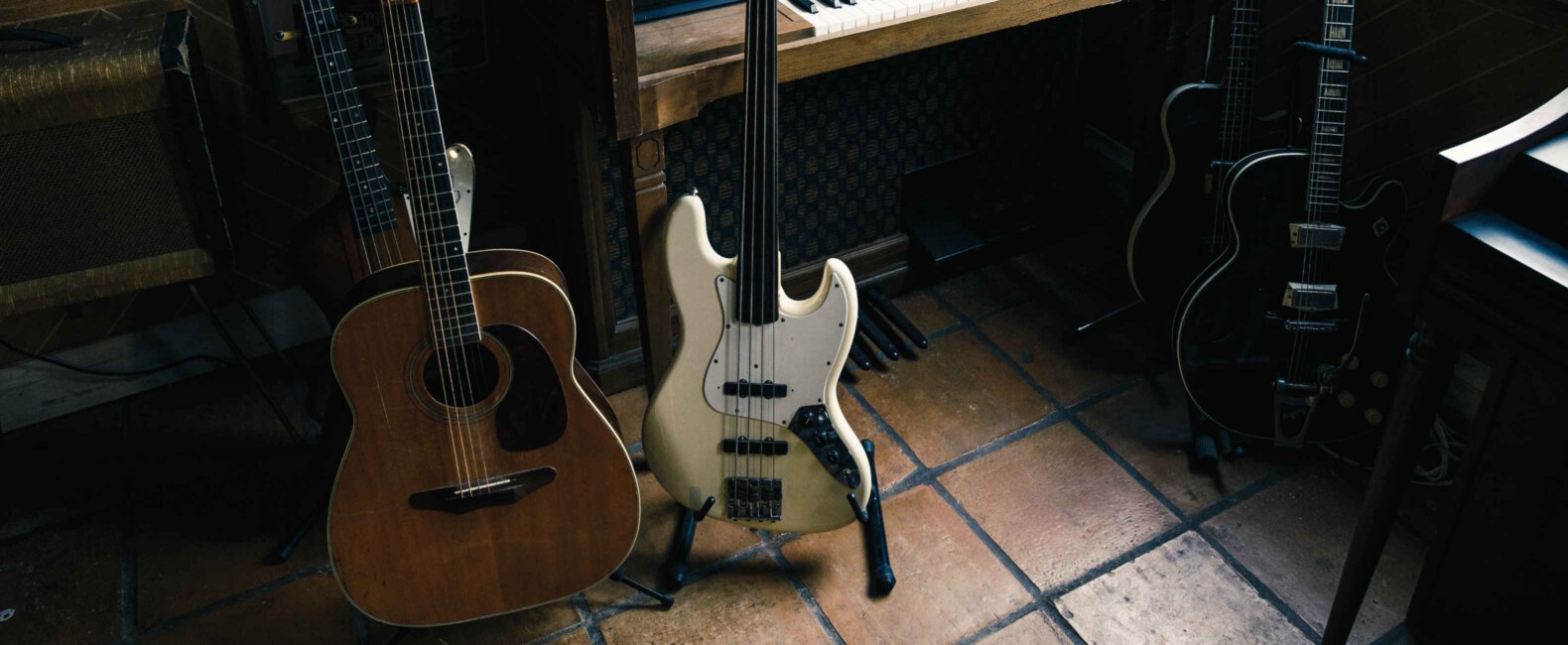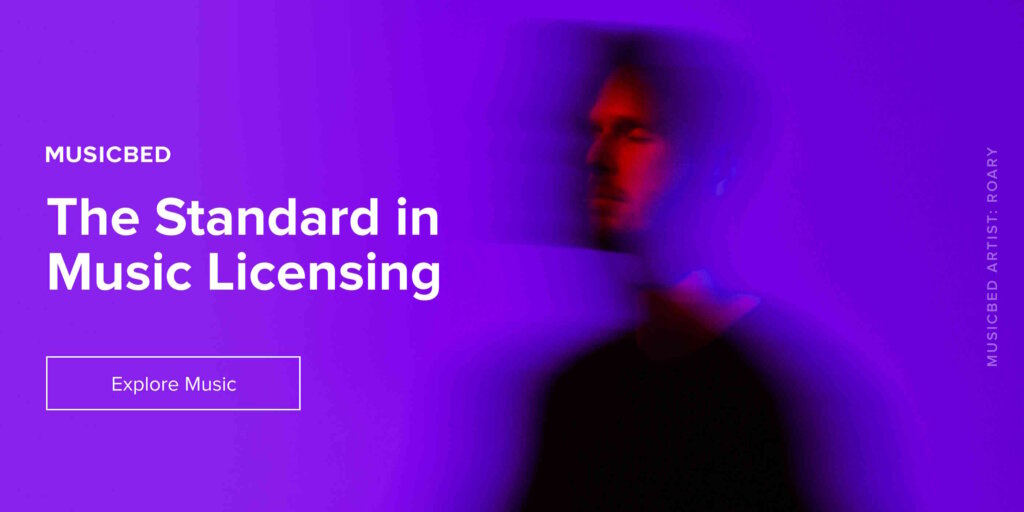Watch any film with the sound off, and you immediately feel like you’ve lost 80% of the story. That’s how important music is to filmmaking. When it comes to choosing music for film, you’re selecting a track for a number of different reasons.
The film’s music track is crucial in setting the mood, establishing the emotional tone of a scene. It enhances narrative, highlighting key plot points and character emotions, while building atmosphere, heightening suspense and, if it’s a real classic, making the film that much more iconic. From Jaws to Star Wars and Lord of the Rings, film scores can become deeply ingrained in popular culture, evoking memories of the film itself.
When it comes to picking the right music track, one of the key questions to consider is whether you’re looking for an instrumental score, or a song with vocals?
Instrumental or Vocal Music?
The truth of the matter is, both instrumental music and vocal tracks have plenty of merits, and either could probably work for the scene you have in mind. In order to decide which is best, let’s take a look at both in more detail.
The pros of instrumental music
For several reasons, instrumental music is often preferred for various video types, including films, commercials, documentaries and more.
- Universal Appeal. Instrumental music transcends language barriers, making it accessible to diverse audiences worldwide. Without lyrics, instrumental tracks can convey emotion and atmosphere without relying on specific languages.
- Enhanced Focus on Visuals. In many cases, the absence of lyrics allows viewers to focus more on the visuals and dialogue of the video. This is particularly important in genres like documentaries, where storytelling primarily relies on visual elements.
- Flexibility and Adaptability. Instrumental music offers flexibility in its application. It can be easily tailored to fit the pacing, mood and thematic elements of a video without being constrained by lyrical content. This adaptability allows filmmakers and content creators to fine-tune the soundtrack to match the desired emotional impact of each scene.
- Supporting Emotional Resonance. Instrumental tracks have the power to evoke emotions and enhance storytelling through melodies, harmonies and rhythms. They can amplify tension, evoke nostalgia, convey joy, or create suspense, all without the need for explicit lyrics. By carefully selecting instrumental pieces that complement the narrative, filmmakers can deepen the emotional resonance of their work.
- Versatility Across Genres. Instrumental music spans a wide range of genres, from orchestral scores to electronic beats, jazz and more. This versatility allows filmmakers to choose music that aligns with the genre, tone and style of their video, whether it’s a heartwarming drama, an action-packed thriller or a lighthearted comedy.
- Timelessness. Well-composed instrumental music has a timeless quality that can endure beyond trends and cultural shifts. This timelessness ensures that the soundtrack remains relevant and impactful, even as the video ages.

The pros of vocal music tracks
Meanwhile, vocal tracks offer a different set of benefits and considerations compared to instrumental music in video content.
- Lyric-Based Storytelling. Vocal tracks often convey explicit messages through their lyrics, adding another layer of storytelling to the video. The lyrics can directly narrate or complement the visuals, enhancing the audience’s understanding of the narrative or themes.
- Emotional Connection. Songs with vocals can establish a strong emotional connection with viewers by expressing complex feelings and experiences in ways that instrumental music alone might not achieve. The combination of lyrics and melody can resonate deeply with audiences, eliciting empathy and enhancing immersion in the video’s storyline.
- Character Development. Vocal tracks can be used to develop characters within the video. For example, a character’s favorite song or a musical motif associated with them can provide insight into their personality, background or emotional state.
- Brand Identity. In commercial videos or advertisements, vocal tracks with catchy lyrics and memorable melodies can help reinforce brand identity and messaging. A well-chosen song can become synonymous with a brand, leaving a lasting impression on consumers.
- Cultural Context. Vocal tracks with lyrics in specific languages or dialects can add cultural richness and authenticity to the video, reflecting the diversity of the intended audience or setting.
- Collaborations and Licensing Opportunities. Vocal tracks often involve collaborations with singers, songwriters and musicians, opening up opportunities for partnerships and licensing agreements that can enhance the video’s production value and reach.
The best of both worlds
At some point in your filmmaking career, you’ve probably encountered the frustrating moment where perhaps you really like the instrumental elements of a song, but the lyrics aren’t quite fitting your scene. Using Musicbed, we have a huge amount of vocal music tracks that also come with the option of the instrumental version. You can thank us later.

Selecting Songs for Specific Video Types
Below, we’re taking a look at two case studies to highlight how you might go about selecting a song for a specific type of video.
Wedding videos
It’s a big one. Selecting the right music track for a wedding video is a huge thing – not something you want to get wrong. So what are the key factors to consider here?
- Emotional Tone. You want to choose music that aligns with the emotional tone and mood of your wedding video. For example, opt for romantic and uplifting melodies for highlights of the ceremony and reception and consider more sentimental or nostalgic tracks for moments like vows or speeches.
- Personalization. It’s always a good idea to select music that reflects the personalities, preferences and cultural background of the couple. Incorporating songs that hold special meaning to the bride and groom, such as their favorite love songs or tracks that played a significant role in their relationship, adds a really personalized touch to the video that’ll make the video that much more poignant for the client.
- Lyrics and Message. Pay attention to the lyrics and message of the songs chosen. Since wedding videos often include heartfelt vows, exchanges of love and meaningful moments, ensure that the lyrics of the selected songs complement the narrative and sentiment of the video without overshadowing the dialogue.
- Pacing and Energy. You should consider the pacing and energy of the music in relation to the pacing of the video. Choose upbeat and lively tracks for those joyful and celebratory moments like the reception entrance or dance sequences, but always opt for a much softer, low-key melody when it comes to intimate or reflective scenes.
- Instrumentation and Genre. You should select music that suits the overall style and theme of the wedding. Whether it’s classical, contemporary, jazz, pop, or indie, the instrumentation and genre should always resonate with the aesthetic of the event and the couple’s taste.
- Flow and Transitions. Your selected music track needs to flow seamlessly throughout the video and transition smoothly between different segments and chapters. Consistent pacing, harmonious transitions, and well-timed musical cues contribute to the overall cohesiveness and polish of the wedding video.
Sports videos
Next up, sports videos. It’s safe to say that these most likely carry a very different energy compared with wedding videos…
- Energy and Tempo. It’s common sense to opt for a high energy level, fast tempo that matches the pace and intensity of the action. Upbeat rhythms and driving beats can create a sense of momentum and excitement, motivating viewers and enhancing the adrenaline-filled moments captured in the video.
- Instrumentation. Powerful instruments including electric guitars, drums, brass sections and synthesizers are commonly used in sports music to convey strength, power and dynamism. The instrumentation in your chosen music track should aim to evoke the spirit of competition and athleticism, hopefully adding more intensity and drama to your video.
- Motivational and Inspirational Themes. You should look for tracks with motivational or inspirational themes that resonate with the feel of competitive spirit and triumph. Lyrics that celebrate victory, perseverance, teamwork and overcoming obstacles can complement the narrative of the video and resonate with athletes and fans alike.
- Match Genre to Sport. Always consider the specific sport featured in the video and choose music that reflects its characteristics and atmosphere. For example, high-energy rock or electronic music may be suitable for extreme sports like snowboarding or skateboarding, while anthemic or orchestral music may be more appropriate for epic moments in team sports like football or basketball.
- Build-Up and Crescendo. Music that builds up to climactic moments and crescendos during key highlights or action sequences is always a winner when it comes to sports videos. Dynamic shifts in the music, such as crescendos, drops, and changes in intensity, can enhance the drama and excitement of the footage, keeping viewers engaged and invested in the outcome.
Musicbed playlists
Here at Musicbed, we put together dozens of custom playlists to help save you precious time and hone in on the right music track tailored to your specific needs. For example, check out this curated playlist from Eliot Rausch – from his personal work to raise awareness for ALS and Alzheimer’s, to commercials for Facebook, Volvo, Guinness, and more, Rausch’s work has a concurrent theme of uplifting and raising awareness.
Meanwhile, if you’re searching for music that fits well with commercial projects and narrative stories, you’ll find this curated playlist from Ricky Staub and Dan Walser very useful. They’ve worked on commercial and narrative projects for iconic brands like Nike, Coca-Cola, Google, and Netflix. And, perhaps most importantly, they’ve become a powerful force for change, advocating for their community.
Music Composition Steps
If you want to source music tracks for your films at a quicker rate, it helps to understand all the various factors and steps that go into making a composition. Every artist’s process is different, but here’s a general step-by-step guide.
- Inspiration. Whether it’s a melody, chord progression, rhythm or concept, every single song starts with an idea or some sort of inspiration.
- Composition. Next comes the actual composition, where you’ll experiment with different musical ideas and arrangements. It’s here that you develop the main elements of the track, including melody, harmony, rhythm and structure.
- Arrangement. After composing, you can arrange the sections of the track (intro, verse, chorus, bridge etc.) to create a more cohesive structure. Artists will consider dynamics, instrumentation, and transitions between the sections.
- Orchestration. Next, instruments and sounds that will bring the composition to life are chosen. You can experiment with different timbres, textures and layers to enhance the sonic palette.
- Recording/Production. In this process, you’ll record and produce the individual tracks or elements of the composition you’ve created, including any vocals that will be layered on top of your instrumental. You can use recording techniques, effects and processing to refine the sound and achieve the desired mix.
- Editing and Mixing. In editing and mixing, you’ll mix all of the recorded tracks together in order to balance the levels, EQ, panning and effects. Ensure that each element of the composition blends together seamlessly.
- Mastering. When mastering the final mix, you want to optimize the overall sound quality, loudness and clarity. Apply the final processing and adjustments to prepare the track for distribution and playback.
- Feedback and Revision. This is optional and totally up to each musician, but you may want to seek feedback from peers or collaborators and make any necessary revisions or refinements to the composition, arrangement or mix. You’re free to take on board their advice, or leave things as they are.
- Finalization. Finally, you can finalize the composition, mix and master, ensuring that all of the elements meet your artistic vision and objectives.
Collaborating with composers
As a filmmaker, there may well be times when you collaborate with a composer on a custom music track for your film – it’s one of the many services we provide here at Musicbed. Understanding the above processes can really help in ensuring that the working relationship runs as smoothly as possible. You should bear in mind the following:
- When and wherever possible, involve the composer in your filmmaking process as early as you can. If they’re privy to pre-production discussions, script readings and the like, they’ll have an intimate understanding of what you’re looking for in the music track.
- Clear communication is everything. So that they understand your vision, send them examples of existing music and reference tracks that capture the mood, style and atmosphere you’re aiming for in your film. Regular feedback loops are great, too. Line up regular meetings and demo presentations where you can review, discuss and revise.
- Collaborating is a two-way street – you should encourage a composer to share their creative ideas, interpretations and suggestions for the soundtrack and be as receptive as possible. Wherever possible (and within reason, of course), you can emphasize creative freedom – let the composer know that they can explore different musical ideas.
- As with any other element of filmmaking, being flexible is key. You have to be prepared to adapt and make adjustments on the fly. Don’t tie yourself to one immovable idea, if you can help it.
- Set and respect deadlines. This shows you’re serious, respects the composer and their time, and also ensures everything stays on schedule.
Technical Toolkit
Whether you’re searching for music tracks for your film, considering vocals and instrumentals, or you’re composing from scratch, there are a few terms you’ll probably come across quite repeatedly.
- Stems. These are the individual audio tracks that comprise a full mix, usually separated by instrument or sound group (drums, bass, vocals, for example).
- Samples. Samples are just short recordings of audio, often taken from existing songs or recordings. They’re used as building blocks in music production.
- Loops. Repetitive sections of music or sound that can be seamlessly repeated to create a continuous pattern or groove are known as loops, because they “loop” around infinitely.
- Trackouts. These are the separate audio files of each individual element or track in a composition, typically used for mixing and mastering purposes.
Tips for Optimal Audio Mixing
Below, let’s take a look at some best practices when it comes to audio mixing.
- Start with Clear Dialogue. Ensure that your dialogue is clean and intelligible by removing background noise and using EQ to enhance the clarity.
- Balance Levels. Ensure that consistent volume levels between dialogue, music, and sound effects are maintained throughout, in order to avoid distracting fluctuations.
- Use Panning. You can get more technical by placing sounds in the stereo field to create depth and realism, and also pan the dialogue to match the on-screen positioning.
- Create Atmosphere. With sound design, you can layer in ambient sounds to establish the environment and immerse the audience in the scene.
And here are the most common pitfalls (and how you can avoid them).
- Overcrowded Mix. Try to prioritize essential elements and remove unnecessary ones – you want to avoid cluttering the mix with too many sounds.
- Unnatural Sound. To maintain realism, play close attention to the sound effects and ambience, ensuring they match the on-screen action and environment.
- Inconsistent Levels. As you piece an edit together, you should regularly check and adjust volume levels to prevent sudden changes that can distract or confuse the audience.
- Ignoring Room Tone. Always capture room tone during filming for seamless audio transitions and continuity purposes
- Neglecting Monitoring. When you’re editing, always use high-quality monitors or headphones to accurately assess audio quality and catch any issues early on.

How Musicbed soundtracks the best in the business
Check out some of our Musicbed Awards winners below, that really showcase how our music can have an impact on the final product.
Documentary Diamond Award-Winner
The Face of Fear, Directed by Alex Ramsey
“I’ve been wanting to work with Gavin ever since I heard his work on ‘Hummingbirds in the Trenches’ many years ago. When I was looking for composers for ‘The Face of Fear,’ his range and cinematic sensibilities felt like a perfect fit for the project. In the end, he changed the shape of the entire project for the better by injecting a subtlety that allowed the storytelling to drive the film. He is a true musical genius.” – Director Alex Ramsey
Featured Musicbed Music: Face of Fear Custom Score by Gavin Brivik
Advertisement Platinum Award-Winner
Amazon Prime | The Lord of the Rings: Rings of Power (Official Trailer)
Featured Musicbed Music: “Breath” by Ex Makina
Branded content Diamond Award-Winner
Google Pier 57 – Anthem, Edited by Ian Watt
“While the Pier 57 space is truly chocked full of unique textures and palettes, it was still an artistic challenge to capture. The space was still undergoing construction while filming, with parallel delivery timelines, the completion of the space itself, and the film to promote it. By doing post-production end-to-end at BANG!™, the flexibility allowed for the crew to capture with two separate shoots several weeks apart to build an edit framework to craft the narrative, and then quickly implement the new footage of completed spaces into the final edits later, without skipping a beat.” – Director/Editor Ian Watt
Featured Musicbed Music:
- “Lift Off (with Toru)” by Jacuzzi Jefferson
- “Breathe In (with Blori)” by Mike Casey
- “Three” by Brendan Eder Ensemble
- “I’ll Be Fine” by Marvin Brooks
- “Four” by Brendan Eder Ensemble
Summary
In summary, choosing music for film is one of the most important tasks a filmmaker undertakes. With a better understanding of music composition and what makes a truly great film soundtrack, you can develop your taste and expand your knowledge accordingly, experimenting with different genres and types of song as you go. With a service like Musicbed at your disposal, it won’t be long before you’re an expert at picking exactly the right track for your film or video project.






















































































